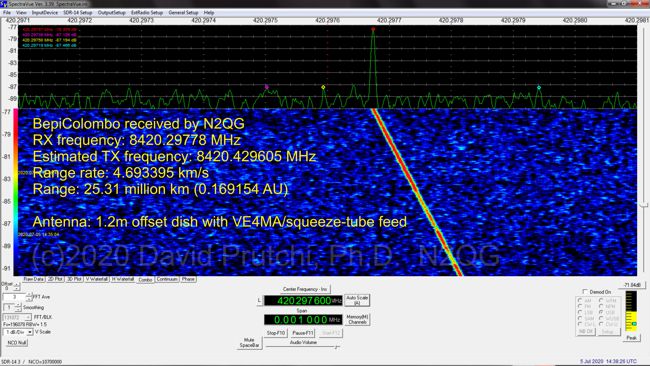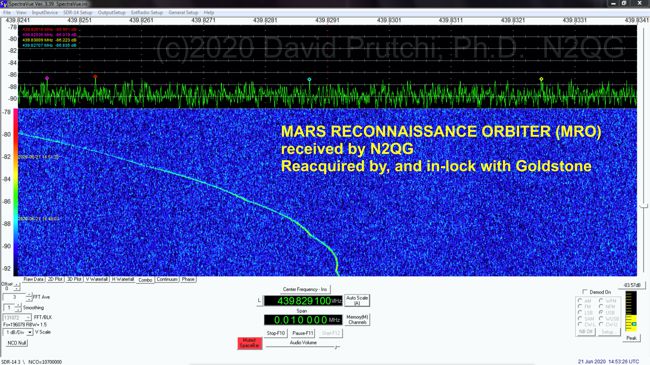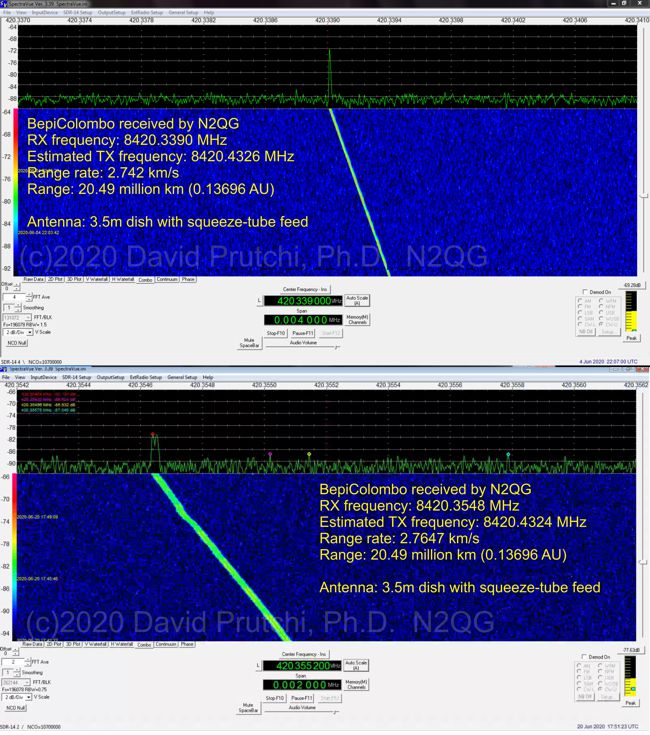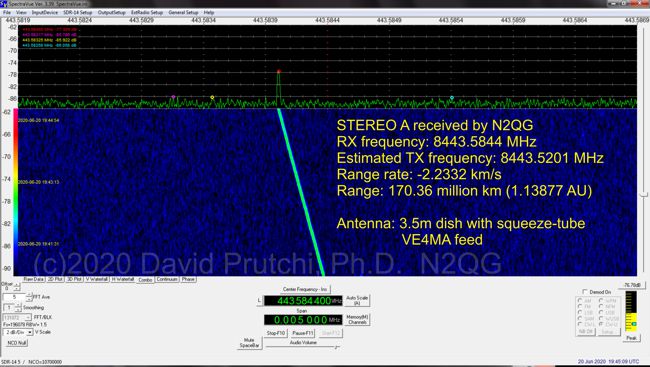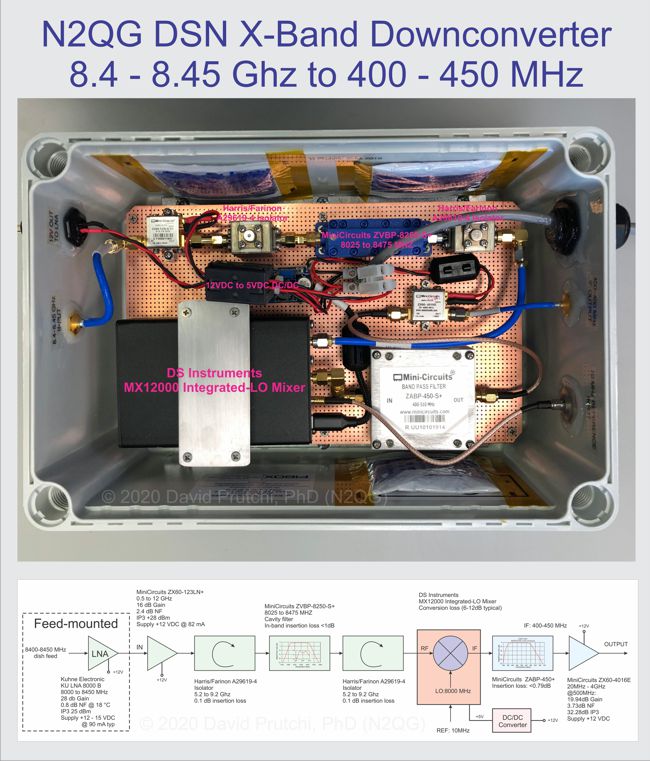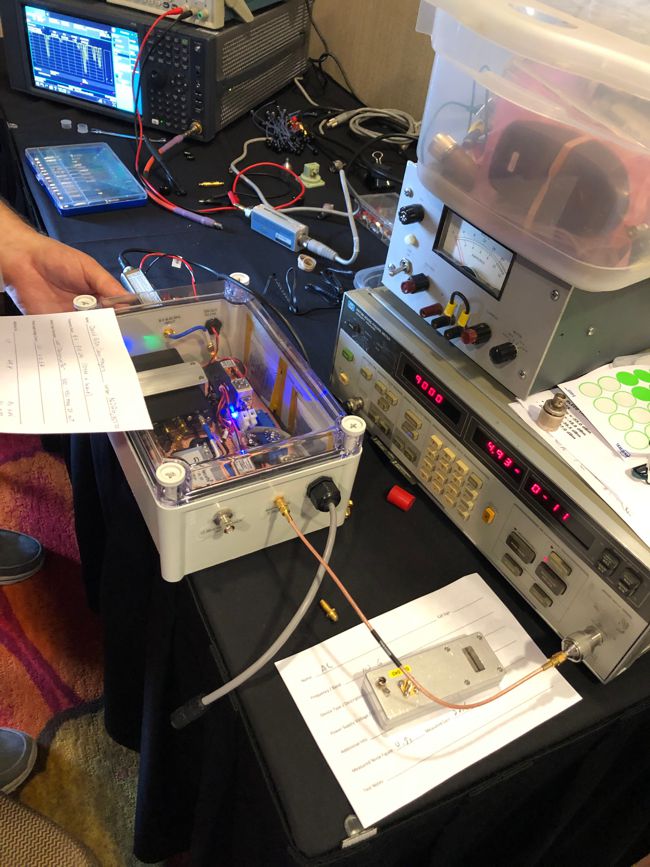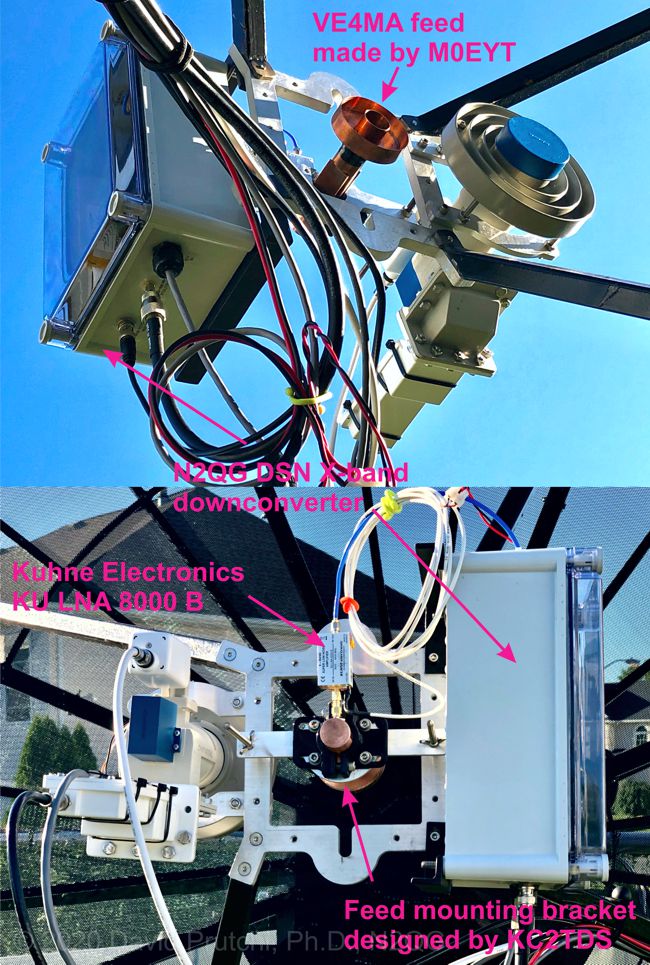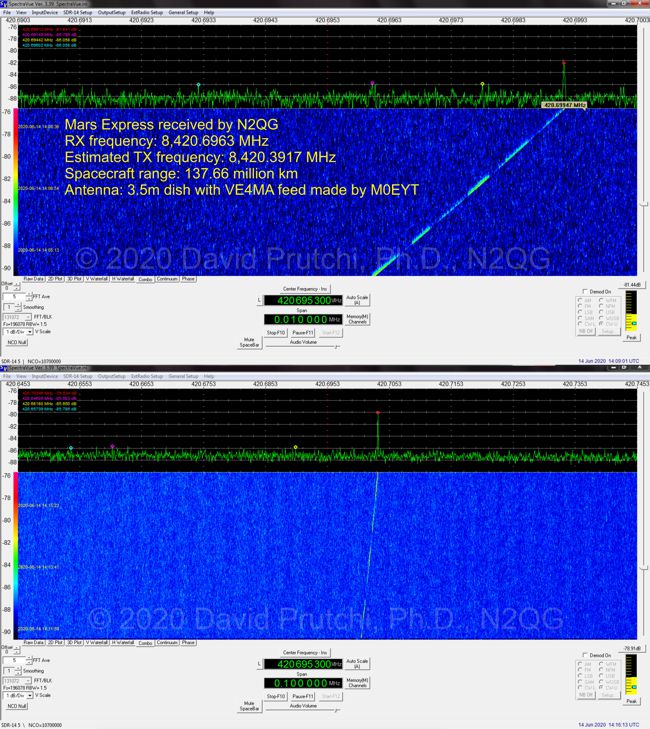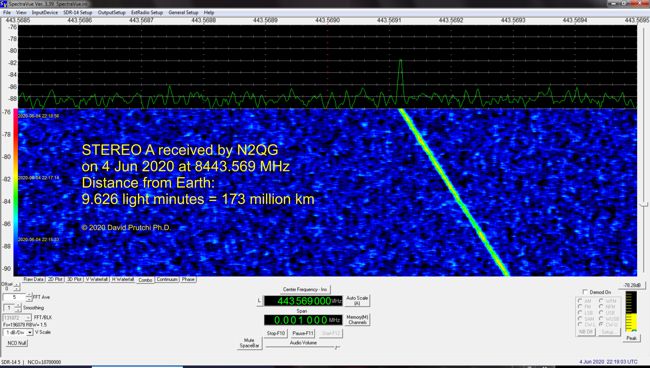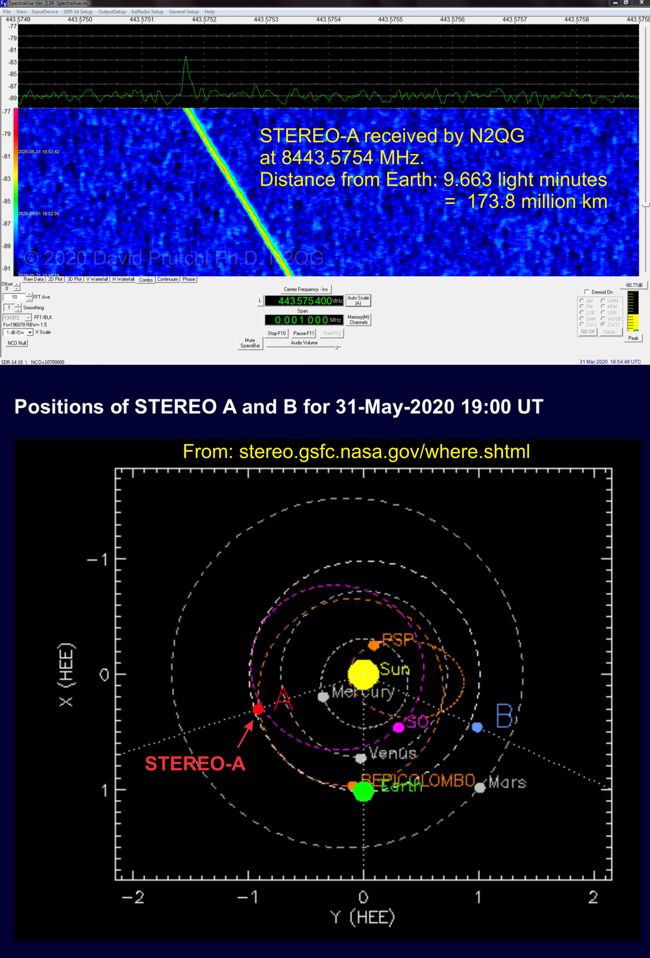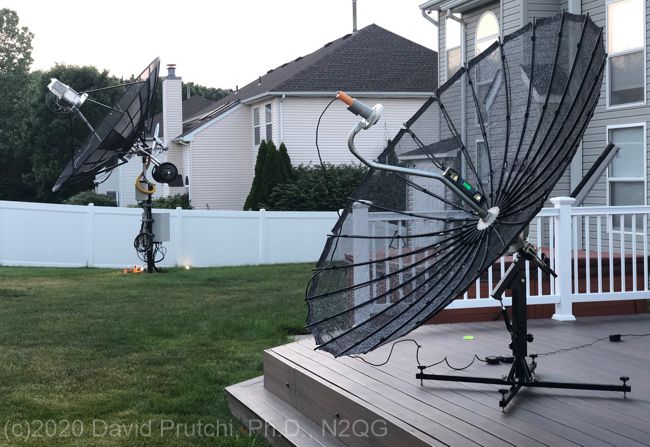
I’ve been planning ahead to the day when I retire, my girls live on their own, and my wife and I can finally take the big-RV roadtrip that we’ve been talking about forever. Not being one for sitting by a campfire, I’m always collecting equipment to take along, and some time ago my ongoing eBay® search for a collapsible parabolic antenna hit gold. It was for an EchoSphere 7.5 ft TVRO folding dish in mint condition. It even came with an extra (slightly damaged) reflector assembly to boot! My plan is to build feeds for 1296 MHz EME and S-Band DSN. Sadly, 10 GHz EME and X-band DSN are out of range for the reflector’s fabric.
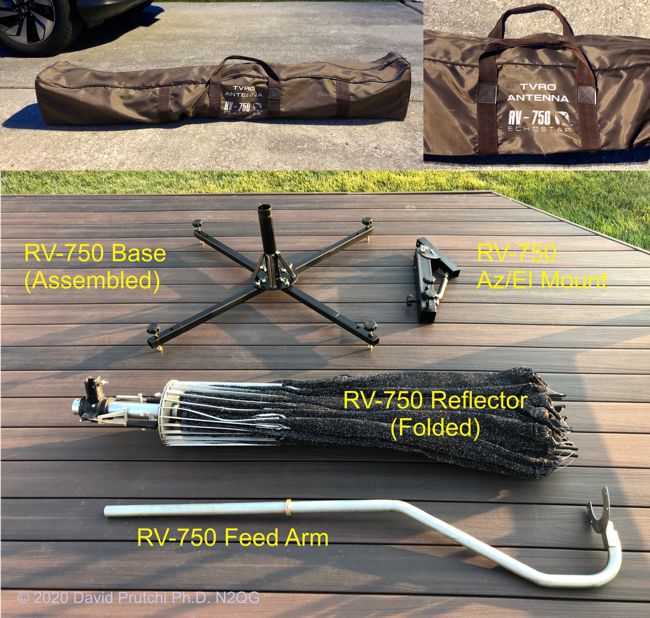
The EchoStar RV-750 comes in a carry bag. It can be assembled and deployed in lessa than 10 minutes (c)2020 David Prutchi PhD N2QG
Finding information on this dish has been much more difficult than I had anticipated. I summarized my literature and experimental findings in a short write-up available at: The EchoStar RV-750 Antenna by N2QG Continue reading

